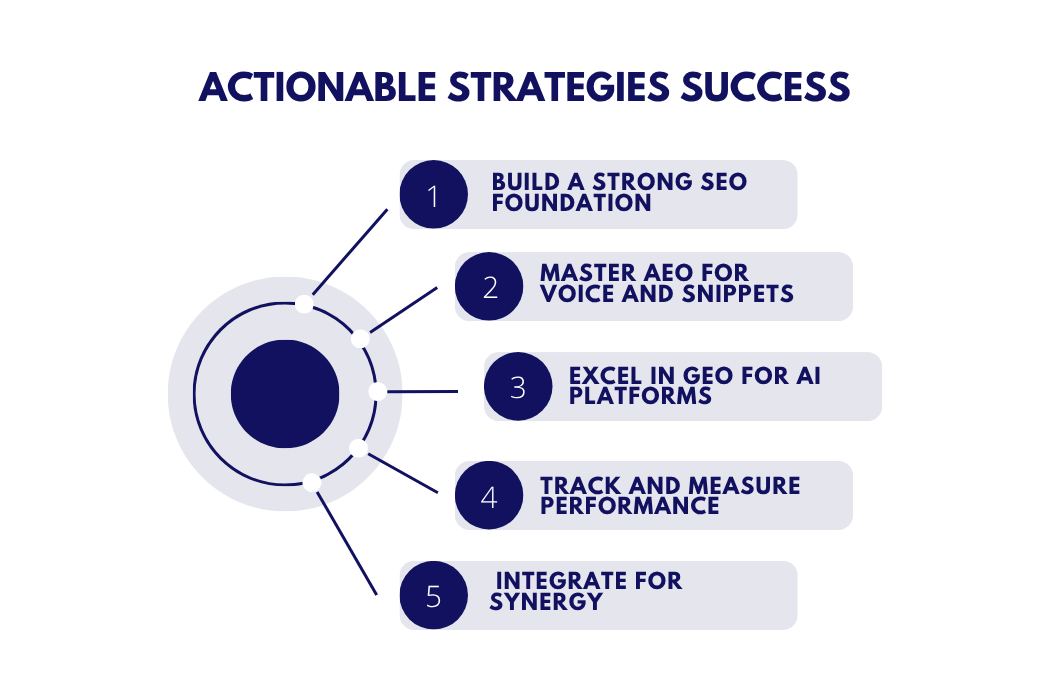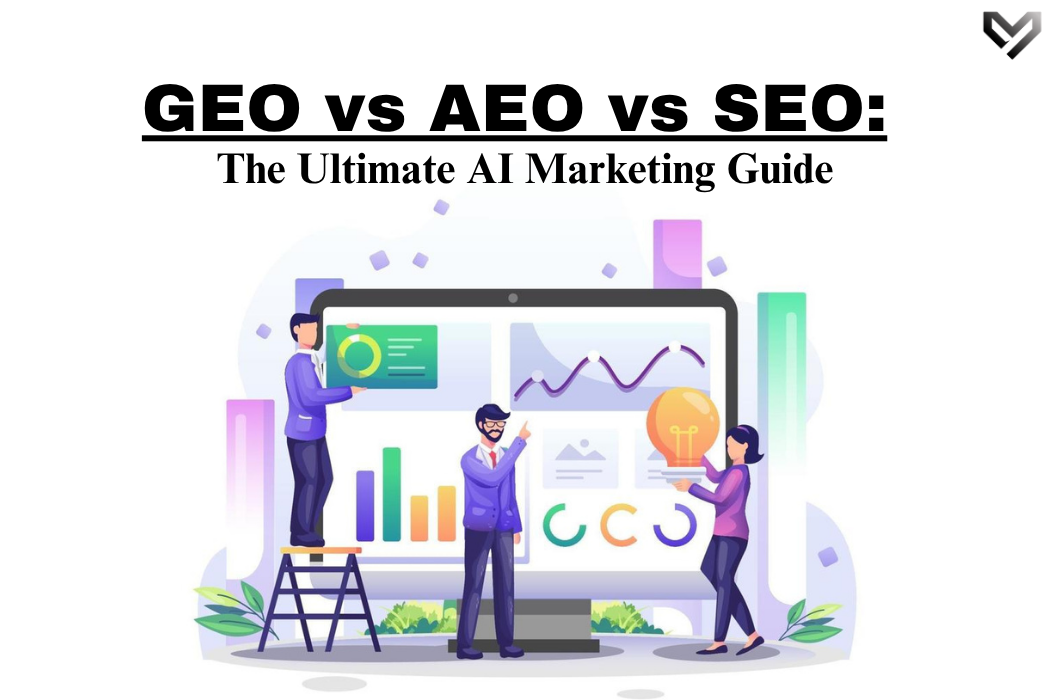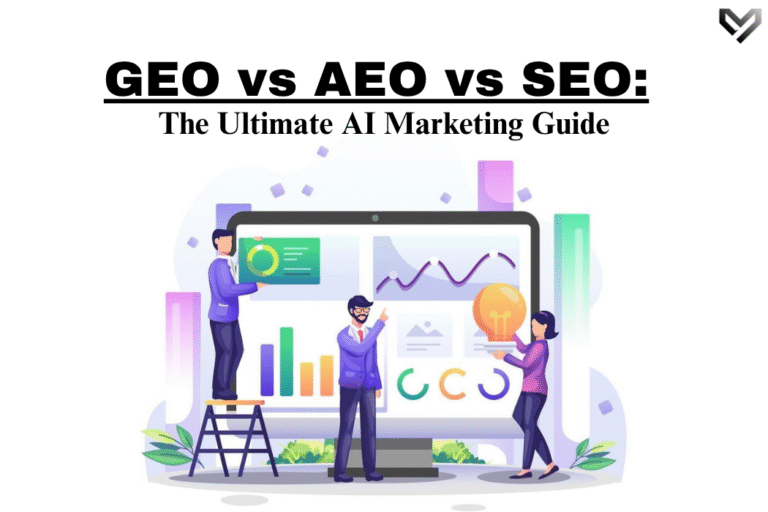In the fast-evolving digital landscape, mastering online visibility requires more than just traditional search engine optimization (SEO). With the rise of AI-driven search technologies, two new players—Answer Engine Optimization (AEO) and Generative Engine Optimization (GEO)—have emerged as critical strategies for businesses aiming to dominate search results. This comprehensive guide dives deep into the differences, synergies, and actionable strategies for SEO, AEO, and GEO, helping you future-proof your digital marketing efforts and boost your brand’s reach across traditional search engines, voice assistants, and AI-powered platforms.
Understanding SEO: The Foundation of Digital Visibility
Search Engine Optimization (SEO) has been the cornerstone of digital marketing for decades, focusing on improving a website’s visibility on search engine results pages (SERPs) like Google and Bing. The goal is simple: rank higher to drive organic traffic. With over 68% of online experiences starting with a search engine, SEO remains vital for businesses aiming to connect with their audience.
Core Components of SEO
- Keyword Research: Identify high-intent keywords your target audience uses, such as “best digital marketing services” or “local SEO tips.”
- On-Page SEO: Improve title tags, meta descriptions, headers, and content to match user search intent.
- Technical SEO: Ensure fast site speed, mobile-friendliness, and clean code structure for better crawlability.
- Off-Page SEO: Build authoritative backlinks from reputable websites to boost domain authority.
- Content Quality: Create engaging, relevant, and user-focused content that addresses searcher intent.
SEO is ideal for businesses like e-commerce stores, local service providers, and content creators aiming for long-term traffic growth. However, with evolving search behaviors driven by AI, voice search, and ChatGPT SEO, relying solely on traditional SEO is no longer sufficient.
AEO: Optimizing for Instant Answers
Answer Engine Optimization (AEO) focuses on delivering straightforward answers to user queries, especially for voice search and featured snippets. With over 71% of consumers using voice search and 40.7% of voice search answers coming from featured snippets, AEO is critical for capturing zero-click searches where users get answers without visiting a website.
Key AEO Strategies
- Structured Data (Schema Markup): Use schema.org tags to help search engines understand your content, increasing chances of appearing in rich results.
- FAQ Optimization: Create question-based content (e.g., “What is the best way to optimize for voice search?”) in concise, scannable formats like lists or tables.
- Conversational Language: Mimic how users speak to voice assistants like Siri or Alexa, using natural, question-based phrases.
- Local SEO Integration: Optimize Google Business Profiles with accurate details, photos, and reviews to rank in local voice searches.
- Content Clarity: Provide clear, authoritative answers under 50 words for AI tools to extract easily.
For example, a local bakery can optimize its Google Business Profile with updated hours and customer reviews to appear when someone asks, “What’s the best bakery near me?” AEO ensures your content is the go-to source for instant answers, boosting visibility even without clicks.
GEO: Crafting Content for AI-Driven Search
Generative Engine Optimization (GEO) is the newest frontier, tailoring content for AI-powered platforms like ChatGPT, Google’s AI Overviews, and Perplexity AI. Unlike SEO’s focus on rankings or AEO’s emphasis on direct answers, GEO ensures your content is synthesized into AI-generated summaries, prioritizing context, intent, and semantic richness over keywords. With 82% of AI responses citing reputable, structured sources, GEO is essential for staying relevant in AI-driven search.
GEO Best Practices
- AI-Friendly Content: Write in a conversational, natural tone that aligns with how AI models process and generate responses.
- Semantic Optimization: Focus on entities (e.g., brands, products) and contextual relevance rather than keyword density.
- Expert Citations: Include quotes, data, or insights from credible sources to establish authority.
- Content Freshness: Update content regularly to reflect current trends, as AI prioritizes fresh, relevant information.
- Structured Formats: Use descriptive subheadings, bullet points, and summaries to make content easy for AI to parse.
For instance, an e-commerce brand selling running shoes can create a blog post titled “Top Features of Running Shoes for Flat Feet,” using clear subheadings and expert quotes. When a user asks ChatGPT, “What are the best running shoes for flat feet?” the AI might use this content and credit it to the brand.
Comparing SEO, AEO, and GEO: Key Differences
| Aspect | SEO | AEO | GEO |
| Primary Focus | Ranking on SERPs | Direct answers in snippets/voice | AI-generated summaries |
| Target Platform | Google, Bing | Voice assistants, featured snippets | ChatGPT, Google AI Overviews |
| Content Style | Keyword-driven, informative | Concise, question-based | Conversational, context-rich |
| User Intent | Discovery and exploration | Immediate answers | Synthesized, intent-driven responses |
| Metrics | Click-through rates, rankings | Snippet appearances, impressions | Citation in AI responses |
While SEO builds the foundation for discoverability, AEO captures zero-click searches, and GEO ensures your content shapes AI conversations. These strategies work together, enhancing each other to achieve maximum visibility.
Why Combine SEO, AEO, and GEO?
In 2025, a multi-layered approach is non-negotiable. Here’s why integrating all three is critical:
- Comprehensive Visibility: SEO brings in traffic, AEO targets voice search, and GEO ensures AI-generated citations, covering every search channel.
- Future-Proofing: With AI-powered search growing (e.g., Google’s AI Overviews reaching 1 billion users monthly), adapting now keeps you ahead.
- Competitive Edge: Businesses blending these strategies outperform those stuck on traditional SEO alone.
- User-Centric Approach: Aligning with user intent across platforms improves engagement and conversions.
For example, a digital marketing agency in the USA could optimize a blog post for SEO with keywords like “top SEO trends 2025,” use AEO to answer “What are the latest SEO trends?” in a featured snippet, and apply GEO to ensure ChatGPT cites their insights in AI summaries.
Also Read Our Article :- What is Digital Marketing? Benefits of Digital Marketing
Actionable Strategies Success

1. Build a Strong SEO Foundation
- Conduct keyword research using tools like Ahrefs or SEMrush to identify high-intent terms.
- Enhance technical SEO by improving site speed, mobile-friendliness, and user navigation.
- Develop valuable, timeless content that solves user problems.
2. Master AEO for Voice and Snippets
- Add FAQ sections with long-tail, question-based phrases (e.g., “How to optimize for local SEO?”).
- Apply schema markup to enhance how content is displayed in rich search results.
- Optimize Google Business Profiles for local businesses to dominate voice search.
3. Excel in GEO for AI Platforms
- Use tools like SurferSEO or InLinks to analyze content for semantic relevance.
- Include expert quotes, data citations, and TL;DR summaries to appeal to AI models.
- Update content monthly to maintain freshness and relevance.
4. Track and Measure Performance
- Monitor SEO rankings and click-through rates with Google Analytics.
- Monitor AEO performance by checking featured snippet placements and impressions in Search Console.
- Use tools like SEMrush or manual testing to check GEO citations in AI responses.
5. Integrate for Synergy
- Create content that serves all three strategies: keyword-rich for SEO, concise for AEO, and contextually rich for GEO.
- Cross-post tailored content on platforms like Medium or LinkedIn, avoiding duplication.
- Leverage AI tools to predict trends and optimize content proactively.
Real-World Example: E-Commerce Success
Imagine an e-commerce store selling eco-friendly products. Here’s how they can apply all three strategies:
- SEO: Optimize product pages with keywords like “sustainable home goods” to rank on Google.
- AEO: Create an FAQ page answering “What are the benefits of eco-friendly products?” for featured snippets.
- GEO: Write a blog post with expert insights on sustainability, formatted with clear subheadings and data, to be cited by ChatGPT.
This multi-pronged approach ensures the store appears in traditional searches, voice responses, and AI summaries, maximizing reach.
The Future of AI-Driven Marketing
As AI technologies like Google’s AI Overviews, ChatGPT, and voice assistants continue to reshape search, businesses must evolve. SEO remains the backbone, but AEO and GEO are the wings that let your brand soar in 2025. By blending these strategies, you can:
- Reach users across all search platforms.
- Build trust and authority with humans and AI alike.
- Stay ahead of competitors in an AI-driven world.
Start today by auditing your website for SEO, optimizing FAQs for AEO, and creating AI-friendly content for GEO. For expert guidance, consider partnering with a digital marketing agency specializing in integrated search strategies. Your brand’s visibility depends on it.





